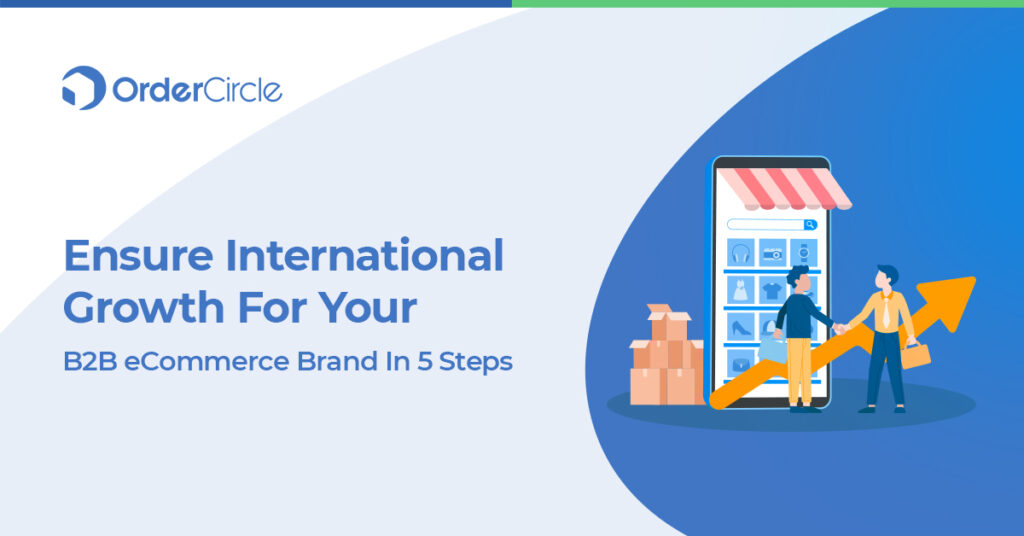When you are living in an age of global village – the world around you contracting into a singularized unit – you’d wonder why your business is still operating under the boundaries of geographical limitations.
Since 2020, the world has undergone a wave of dynamic changes, which have impacted the socio-economic and political landscape. Starting from the COVID-19 pandemic, which saw changes in customer experience and buying behaviors, to the current political unrest in Russia and Ukraine, markets have witnessed blows after blows. Despite these fast-paced changes, if one industry has managed to cope, it is B2B eCommerce. The B2B sector is booming in the world. Crossborder deals for B2B businesses in America accounted for 25% of their sales.
With this in mind, as a B2B business person, this is a suitable time to get going on international expansion. Have a look at the following steps to make sure your B2B eCommerce business expands exponentially:
Revisit Your Market Strategy Using SWOT Analysis
With personalization and media-rich marketing and sales tools, B2B vendors are increasingly aiming to give business buyers experiences on par with those offered to consumers. It’s crucial to stick with that strategy when growing overseas.
You can begin by having your marketing team conduct a SWOT (Strengths, Weaknesses, Opportunities, Threats) analysis. Strengths and weaknesses are internal factors of your company. For example, you may have great email marketing but poor social media reach. Opportunities and threats, as the name suggests, identify the opportunities and challenges in the marketplace. Analyzing these factors, help you get a lukewarm idea about how well your company fairs in the global marketplace and where can it improve to hit the bull’s eye.
Build A Glocal Brand
Glocal brand is a colloquial phrase for a global brand that localizes its promotional content to hit the right notes with its target audience. Catering to customers in new foreign markets isn’t as straightforward as running your existing website through an automated translation service. Machine translation cannot take into account cultural differences. For example, marketing communications in English are frequently more informal and succinct than those in German, which have a more descriptive tone and underscore particular product aspects.
You can build a glocal brand by diversifying your language options, including multi-currency payments and offering international deliveries more simply. Such offerings act as the stepping stone in bridging the gap in customer experiences.
Adjust Your Prices Based On Competitive Analysis
Setting prices for a global market can be a crucial challenge if you’re new to it. In such cases, it is best to keep up with your competitors and analyze their pricing structures. This helps you break down your prices in a relevant and reasonable fashion.
You must be able to accept payments in a variety of currencies if you want to expand internationally, but you also need to be aware of additional expenses like shipping and customs duties. Make sure you are transparent about the costs associated with a cross-border transaction for both you and your customer. Business purchasers detest these kinds of last-minute add-ons just as much as regular consumers do. Hence, analyzing what your competitors are doing right or where are they lacking helps you formulate a reasonable price plan.
Compliance & Review Payment Options
Cross-border brand expansion necessitates navigating various tax laws in various nations. For example, brands accustomed to American sales tax rules may need to learn how to handle VAT correctly and submit VAT reports and other tax paperwork to sell in British or European markets. This adds a new level of complexity to their operations. Apart from taxes some other compliance issues to take note of include:
- Data and privacy policies
- Product related guidelines
- Delivery procedures
- Other industry-specific norms.
Additionally, you want to provide sufficient payment options or at least the ones which fit in most of your international markets. 9% of customers abandoned their carts, according to a Baynard survey, because there weren’t sufficient payment options. Instead of generalizing your payment options with Apple Pay and PayPal, try to incorporate more payment options, which help buyers enjoy a seamless experience.
Streamline International Fulfillment With Smart Supply Chain
We are living in times when people want businesses to expedite deliveries. 22% do not complete an eCommerce purchase because they found the delivery was too slow. To streamline the streaming service, the focus should be on building a smart supply chain business.
Although cross-border shipping might be challenging, customers are expecting their orders to be processed quickly and error-free as international orders become more commonplace. Even the biggest companies find it difficult to create a global network of wholly owned distribution centers and warehouses; for this reason, it’s crucial to establish partnerships with fulfillment partners in significant regions.
To ensure efficient data sharing, connect these partners to your online store. Brands must also clearly explain to customers how returns will be handled and incorporate a strategy for handling them into their shipping and fulfillment procedures.
With that being iterated, let’s not forget that expanding into international markets can be more work than it appears. However, with the right tools and software beside you, you can ease up this challenge. Opt for OrderCircle to make sure that not only is it easy to take international orders but tracking them right from the order date to the shipment. Additionally, our multilingual and multi-currency features, make the whole experience simply easy and global.
Book a demo today and go global with OrderCircle.
Also read:- B2B Ecommerce – Playing In The Big Leagues

